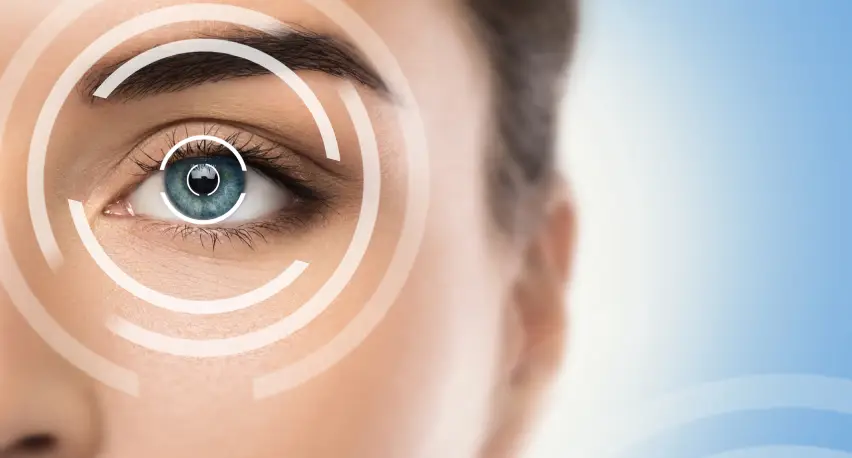In today’s fast-paced world, maintaining eye health is of paramount importance for families. The eyes are often overlooked when it comes to overall wellness, yet they are vital windows to our health and daily functioning. In this article, we will explore comprehensive Eye Health Tips that will not only aid you in preserving your family’s vision but also enrich your understanding of eye care practices.
Eye Health Tips

The journey towards optimal eye health begins with awareness. Understanding the common factors that contribute to eye strain and potential vision problems is essential for every family. This section will delve into various aspects of eye care, providing you with valuable insights and strategies to incorporate into your family’s routine.
Understanding Vision Problems
Most people take their vision for granted until issues arise. Common vision problems include nearsightedness, farsightedness, astigmatism, and presbyopia. Each condition has distinct symptoms and requires different approaches for management.
Nearsightedness, or myopia, is a condition where distant objects appear blurry while close objects can be seen clearly. It usually develops during childhood or adolescence, and its progression may lead to more severe complications if left uncorrected.
Farsightedness, or hyperopia, on the other hand, results in difficulty focusing on nearby objects while distant sights remain clear. This condition can cause eye strain and fatigue, especially during tasks such as reading or sewing.
Astigmatism occurs when the cornea or lens is irregularly shaped, leading to blurred vision at any distance. Meanwhile, presbyopia is an age-related condition where the eye loses its ability to focus on close objects, typically becoming noticeable around the age of forty.
Understanding these conditions can help families recognize symptoms early and seek appropriate professional evaluations.
Regular Eye Examinations
One of the most effective Eye Health Tips is to schedule regular eye examinations for all family members. These check-ups are crucial for identifying potential vision problems before they escalate. Children should begin receiving annual eye exams starting at the age of three, while adults should have comprehensive exams every two years or as recommended by their optometrist.
During these visits, eye care professionals assess not only visual acuity but also the general health of the eyes. They can detect early signs of serious health issues, such as diabetes or hypertension, which may manifest through eye problems. Early detection is key in preventing long-term damage, making regular check-ups a sound investment in your family’s health.
Protecting Eyes From Digital Strain
With the rise of screen time due to increased reliance on technology, digital eye strain has become a prevalent concern. Symptoms include dryness, irritation, blurred vision, and headaches, collectively known as computer vision syndrome.
Encourage your family to adopt the 20-20-20 rule: after every twenty minutes of screen time, take a twenty-second break and focus on something twenty feet away. This simple practice helps reduce eye fatigue and promotes better eye comfort.
Additionally, ensure that screens are positioned at an appropriate distance—about an arm’s length away—and maintain good lighting to minimize glare. Consider using specialized glasses designed for screen use, which can filter out harmful blue light emitted from devices, further contributing to good eye health.
Nutritional Choices for Eye Health
Diet plays a significant role in maintaining healthy eyesight. Incorporating nutrient-rich foods into the family diet can significantly bolster eye health. Foods rich in vitamins C and E, omega-3 fatty acids, and lutein can help protect against age-related macular degeneration and cataracts.
Encourage family meals that include leafy greens like spinach and kale, orange-colored fruits and vegetables such as carrots and sweet potatoes, and fatty fish like salmon and tuna. Not only do these foods support eye health, but they also promote overall well-being, making mealtime an opportunity to nourish both body and eyes.
How to Maintain Good Eye Health for Your Family

Maintaining good eye health involves proactive measures that encompass daily habits, environmental adjustments, and lifestyle choices. This section offers practical steps that families can integrate into their routines to support long-lasting vision and eye comfort.
Creating a Comfortable Viewing Environment
An optimal viewing environment is critical in preventing strain and discomfort. Ensure that your home is well-lit and that the lighting is adequate for activities such as reading or homework. Avoid harsh fluorescent lights; instead, opt for warm white bulbs that provide a soft glow.
Position furniture thoughtfully to reduce glare from windows and screens. Consider using curtains or blinds to control natural light and enhance visibility. Moreover, the positioning of screens is vital—angle them slightly downward to align with your line of sight, which helps minimize strain on the neck and eyes.
A clutter-free space free from distractions allows the eyes to focus better without unnecessary stress. Making these small adjustments can go a long way in promoting good eye health for the entire family.
Encouraging Outdoor Time
Spending time outdoors is beneficial not just for physical fitness but also for eye health. Studies suggest that exposure to natural light and engaging in outdoor activities can lower the risk of developing myopia in children.
Encourage your family to participate in outdoor sports, gardening, or simply taking walks in nature. Activities that require focusing on distant objects help relax the eye muscles and improve overall visual function.
Moreover, being outside provides an opportunity to interact with the environment, fostering mindfulness and appreciation for nature, which can have a positive impact on mental health as well.
Practicing Good Hygiene
Another aspect of maintaining eye health lies in practicing proper hygiene. Teach your family the importance of washing hands frequently, especially before touching the eyes or handling contact lenses. Bacterial infections can lead to serious eye conditions, including conjunctivitis (pink eye), which can spread easily among family members.
For contact lens users, educate them about the significance of properly cleaning and storing lenses, as well as adhering to wearing schedules. Failing to follow these practices can result in eye infections, discomfort, or even permanent vision damage.
Encouraging eye hygiene extends to limiting touchpoints around the eyes. Remind family members to avoid rubbing their eyes, as this can introduce dirt and bacteria, potentially leading to infections.
Educating About Eye Safety
Awareness and education are pivotal components of eye health maintenance. Teach your family about the importance of eye protection in various situations. For instance, when engaging in sports, wearing protective eyewear can significantly reduce the risk of eye injuries.
Additionally, encourage the use of sunglasses with UV protection to shield eyes from harmful rays when outdoors. This simple gesture can prevent sunburn on the eyes and reduce the risk of cataracts and other damaging conditions.
Educating children about safety precautions when using tools, playing with toys, or engaging in activities involving flying objects can foster a culture of caution and care around eye safety.
Conclusion
In conclusion, prioritizing eye health is essential for the well-being of every family member. By implementing the Eye Health Tips discussed throughout this article, families can create a culture of care and vigilance regarding their vision. From understanding common vision problems to establishing preventive measures and encouraging healthy habits, each step plays a significant role in safeguarding sight for future generations.
Embrace these practices together as a family, making eye care a shared responsibility that enhances not only individual health but also strengthens familial bonds. Remember that our eyes are one of our most precious assets—taking the right steps today can pave the way for a lifetime of good vision and vibrant experiences ahead.

